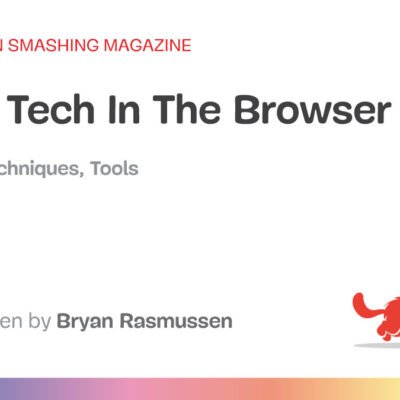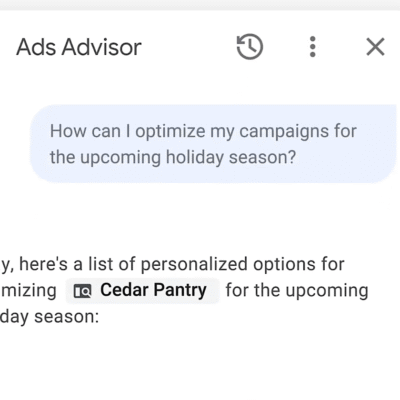Your API might be killing your growth & you wouldn’t even know it.
In FinTech, APIs are more than just a technical layer. They’re your handshake with the outside world. Every partner integration, every new feature rollout, every B2B relationship, it all flows through your APIs. But as you scale and ship faster, complexity creeps in. Endpoints multiply. Documentation drifts. Devs get frustrated. Deals stall.
Sound familiar?
A recent Postman report found that 67% of developers blame poor documentation and complex API design for integration failures. And McKinsey research shows that financial companies embracing modular API strategies can cut integration time by 40%, a serious competitive edge in a space where speed = survival.
So why do so many FinTech APIs still feel like spaghetti wiring behind a slick-looking dashboard?
Here’s an analogy: imagine plugging your smart speaker into a power strip that’s overloaded with tangled adapters, sketchy converters, and half-functional sockets. That’s what it feels like to build on a FinTech platform with a bloated, inflexible API.
But here’s the good news: complexity isn’t a cost of doing business, it’s a design problem you can solve.
You’ll learn how top FinTechs are: Simplifying their APIs without sacrificing power, Speeding up partner onboarding without compromising control & Future-proofing their tech stack for scale and agility.
If you’re building in FinTech and want your platform to be easy to integrate with, then this one’s for you.
What Makes FinTech APIs So Complex?
APIs are supposed to simplify things, but in many FinTech platforms, they do the opposite. What starts as a clean interface between systems often snowballs into a tangled mess of endpoints, inconsistent logic, and frustrating developer experiences. Here’s why:
1. Feature Creep = Endpoint Overload
FinTech platforms evolve rapidly. One day you’re handling basic payments; the next, you’re adding lending, insurance, compliance, and analytics. Each new feature typically brings new endpoints, often added reactively, without revisiting existing design. The result? A sprawling API that’s hard to navigate, maintain, or extend.
2. Inconsistent Naming, Structures, and Versioning
Without a standardized approach to naming conventions, data formatting, or API versioning, every new addition becomes a puzzle. Some endpoints return camelCase, others snake_case. Some have nested responses; others are flat. Versioning might be handled via URLs, headers, or not at all. This lack of consistency frustrates development teams and increases the likelihood of errors.
3. Poor Documentation (or No Documentation at All)
It’s one of the oldest problems in software & still one of the most damaging. A beautifully designed API is useless if no one knows how to use it. When documentation is outdated, incomplete, or overly technical, partners are left guessing, which leads to longer integration times and costly support tickets.
4. One-Size-Fits-All Design Philosophy
Many FinTech APIs are built to serve every possible use case from a single, rigid interface. This leads to over-complexity where simple requests require handling massive payloads or filtering through irrelevant fields. Not all partners need full access, some just want a lightweight, purpose-built integration.
5. Security and Compliance Layers Add Friction
Especially in FinTech, where data sensitivity and regulation (like PCI DSS, GDPR, or HIPAA) matter, added layers of auth, encryption, and auditing can turn even basic API calls into multi-step processes. While critical, these layers must be integrated cleanly, otherwise they end up feeling like roadblocks, not safeguards.
How to Design Developer-Friendly APIs That Scale
A. Embrace Modular Architecture
Rather than building a massive, monolithic API that tries to do everything, split functionality into modular services using RESTful endpoints or gRPC-based microservices.
- REST is well understood and easy to consume across most emerging technologies.
- gRPC offers high-performance, binary communication, ideal for low-latency systems like real-time trading or risk analysis.
This composable approach allows developers to integrate only what they need, without getting entangled in your entire platform. It also reduces the blast radius of future changes.
B. Use Smart Versioning Through API Gateways
Versioning is not optional. It’s your insurance policy against breaking things. A smart versioning strategy using an API gateway lets you support multiple versions (v1, v2, etc.) in parallel so partners aren’t forced to refactor their integrations overnight.
- Version via URL (e.g., /v1/transactions) or headers (X-API-Version)
- Use API gateways like Kong, Apigee, or AWS API Gateway to route and manage versions
- Deprecate gracefully with usage analytics and alerts
This gives internal teams freedom to evolve the product without burning bridges with your developer community.
C. Standardize Payloads and Error Responses
Inconsistency kills confidence.
- Use clear, consistent structures across all endpoints
- Apply standard HTTP status codes with helpful, structured error messages
- Include error codes, trace IDs, and developer-friendly descriptions
A standardized response structure helps developers debug faster and build integrations with fewer surprises.
D. Prioritize Documentation and Sandboxing
You don’t want developers emailing support just to find the right endpoint. Invest in a developer-first experience with:
- Live, interactive documentation (Swagger/OpenAPI)
- Ready-to-use Postman collections
- SDKs in popular languages
- A public changelog with breaking changes clearly marked
- Sandbox environments that mirror production behavior
These tools not only reduce integration time, they build trust and goodwill with your partners and customers.
Tools and Techniques to Reduce API Bloat
API Linting & Automated Testing
Use tools like Spectral or Stoplight to enforce design rules and catch inconsistencies before they reach production. Pair this with QA software testing (e.g., Dredd, Postman Monitor) to ensure your API behaves as documented, every time.
GraphQL for Flexible, Targeted Queries
GraphQL lets clients request exactly the data they need, no over-fetching, no wasted payloads. It’s a powerful addition when REST endpoints become too rigid or verbose.
Event-Driven APIs & Webhooks (Ditch Polling)
Replace resource-heavy polling with lightweight webhooks for key events, like transaction completions or KYC approvals. This makes your API more responsive and less cluttered, while improving the developer experience.
Building a FinTech API Strategy for the Future
API Governance
Establishing clear ownership, standards, and lifecycle management ensures consistency across teams and products. Good governance prevents chaos as your ecosystem grows and protects against unplanned tech debt.
Observability & Monitoring
Robust observability tools (e.g., logging, tracing, real-time health dashboards) give you full visibility into API performance and failures. This helps teams respond fast, debug faster, and build confidence with stakeholders.
Integration Analytics & Usage Insights
Understanding how partners consume your API, what endpoints are most used, what’s failing, where friction exists, enables continuous improvement. It also supports strategic decision-making about deprecation, refactoring, and feature rollout.
Future-Proofing for AI & Compliance
APIs must support AI workloads (like real-time data ingestion, risk scoring, or customer profiling) while staying compliant with ever-evolving regulations. This means secure data handling, clear permissions, explainable models, and audit-friendly design.
At ISHIR, we don’t just build APIs, we build long-term product ecosystems. Through our Software Product Development Services, we help FinTech companies design scalable backend architectures, implement observability pipelines, establish API governance frameworks, and future-proof systems for AI and regulatory shifts.
Whether you’re launching a new platform or modernizing legacy systems, ISHIR brings deep technical expertise and industry insight to ensure your APIs grow with your vision.
Wondering how to deploy GenAI without risking your business?
Start with a framework built for trust.
The post Simplifying FinTech APIs in Product Development: Scale Without Sacrificing Flexibility appeared first on ISHIR | Software Development India.





